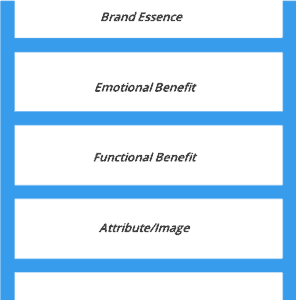How to Calculate Customer Churn Rate
In marketing, we spend a lot of time trying to attract new customers, but it’s also important to know how many customers you may be losing. So, in...

Think of an ad that has stuck with you and quickly jumps to the top of your mind. It could be an old ad or one you saw this week. What was it about that piece of marketing that made you retain it? Was it funny? Sad? The chances are that it was some form of emotional advertising that struck a chord with you and allowed your brain to associate that feeling with the brand in some way. Emotional advertising is not a new concept. However, it is one that is still actively debated as an approach for most brands versus product feature marketing.
If you think through ads that get shared online and through email, what they have in common is they make us feel something. And while that doesn't necessarily mean that everyone who feels something emotionally will purchase your product, it does put your product or brand on a different emotional plane than one that has more feature-driven messaging.
Brands like Apple, Coca-Cola, and Dove leverage emotional advertising that represents mission and vision. Sure, Apple could solely compete on the features of their Apple Watch, laying out why their product is better than Samsung's watch, but consumers are ultimately not that rational.
Unlike functional advertising, emotional advertising allows the audience to feel like they are a part of a community or lifestyle. Plus, research shows a correlation between emotional advertising and recall.
Adopting a more emotional, customer-based approach in your marketing requires uncovering the abstract meanings that consumers associate with your brand, otherwise referred to as your brand essence.
Through a process called laddering, you can take steps to uncover the essence of your brand. This exercise is based on the idea that brand meaning can be deepened by examining progressively more abstract implications of a brand's features.

The bottom rung of the ladder depicts the starting point, typically attributes. The implication of an attribute is a functional benefit, which is the second rung on the ladder. This is followed by an emotional benefit and, finally, by the brand essence.
As you climb the ladder, the focus is less on the attributes and functions of the product and more on the role that the product or brand plays in the lives of its consumers.
Dove soap is a great example of a brand moving from functional to emotional advertising. Dove was invented after World War II as a non-irritating skin cleaner for use on burns and wounds. The first commercial Dove product in 1957 was a beauty bar that claimed it would not dry out your skin because, unlike soap, Dove contained one-quarter moisturizing cream. Depending on your age, just reading that sentence probably brought back memories of their old campaigns that used to tout that feature ad nauseam.
Under Unilever, Dove became a masterbrand. This meant that it would need to lend its brand name to products beyond beauty bars. Dove needed to go beyond functional benefits, which now meant different things across these new categories, and establish their brand essence across a variety of products.
As a result, Dove introduced a more emotional concept of "Real Beauty" after uncovering discontent among consumers who saw "young, white, blonde, and thin" as the universal stereotype often seen in the category.
This concept resonated with their audience so well that their marketing team hasn't looked back and has been using the same platform for nearly 20 years now.
A more recent example can be seen in the marketing of high-end exercise bikes. Peloton has seen a tremendous amount of success, evidenced by the fact that they tripled their revenue in just one year. According to a WSJ interview with their brand marketing lead, Carolyn Tisch Blodgett, the company's early ads demonstrated how the product worked. Now that product awareness has risen with consumers, the brand has transitioned to a more emotional approach to defining the brand and its community of riders through the "Better Is In Us" campaign.
What's more powerful is the fact that the ads are driven by real customer stories.

If we were to imagine Peloton's brand essence ladder, it might look like this:

Now, imagine that you're in the market for an exercise bike with on-demand classes. After watching the Peloton ad, do you have more affinity for that brand or its competition, whose marketing is still focused on a lower rung of the ladder?
If done correctly, emotional advertising can be a very powerful way to differentiate your brand story in a category where product features are easily copied and commoditized. Before you decide to head down an emotional path in your marketing, though, consider these four questions:
Sign up for our monthly newsletter to receive updates.

In marketing, we spend a lot of time trying to attract new customers, but it’s also important to know how many customers you may be losing. So, in...

I recently mentored a graphic design student on her project for AIGA Orlando's Spot Showcasementorship program. I found myself providing guidance...

The term native advertising was first coined in 2011, but the practice creating ads that fit seamlessly within the context of the channel in which...